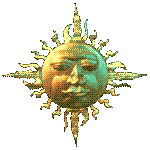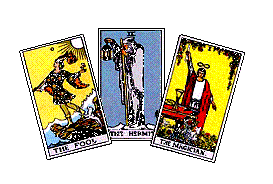|
What Is Tarot? Like other forms of cartomancy divination which involve playing cards, the Tarot is a pictograph system; a means of displaying information in a visual form. The idea is that the archetype symbols on the cards relay an empathetic or spiritual message through their impression on the reader. There are many ways to use Tarot cards in practice, most notably the popularity of specific card spreads. This page and its offspring pages intend to depict the common meanings or interpretations of the Tarot cards. Origins in Freemasonry Tarot today is influenced by Freemasonry and its beliefs taken from Biblical, Hermetic, and Neoplatonic sources. This is due to the popularity of the Rider-Waite Tarot deck published in 1909, originally designed by Freemasons. Thus it is common for Tarot interpretations to rely on ideas borrowed from (Christian) astrological symbolism, Christian mysticism, and Kabbalah (based on the idea that Hebrew and numerology contribute so much to the Christian Bible).
The modern Tarot totals 78 cards with the Major Arcana of 22 cards, and the Minor Arcana of 56 cards and 4 suits: Wands, Pentacles, Swords, Cups. These 4 suits may be further divided into the Numbered Arcana of numbers 1-10 and the Court Arcana of 16 cards.
Tarot Links
|






